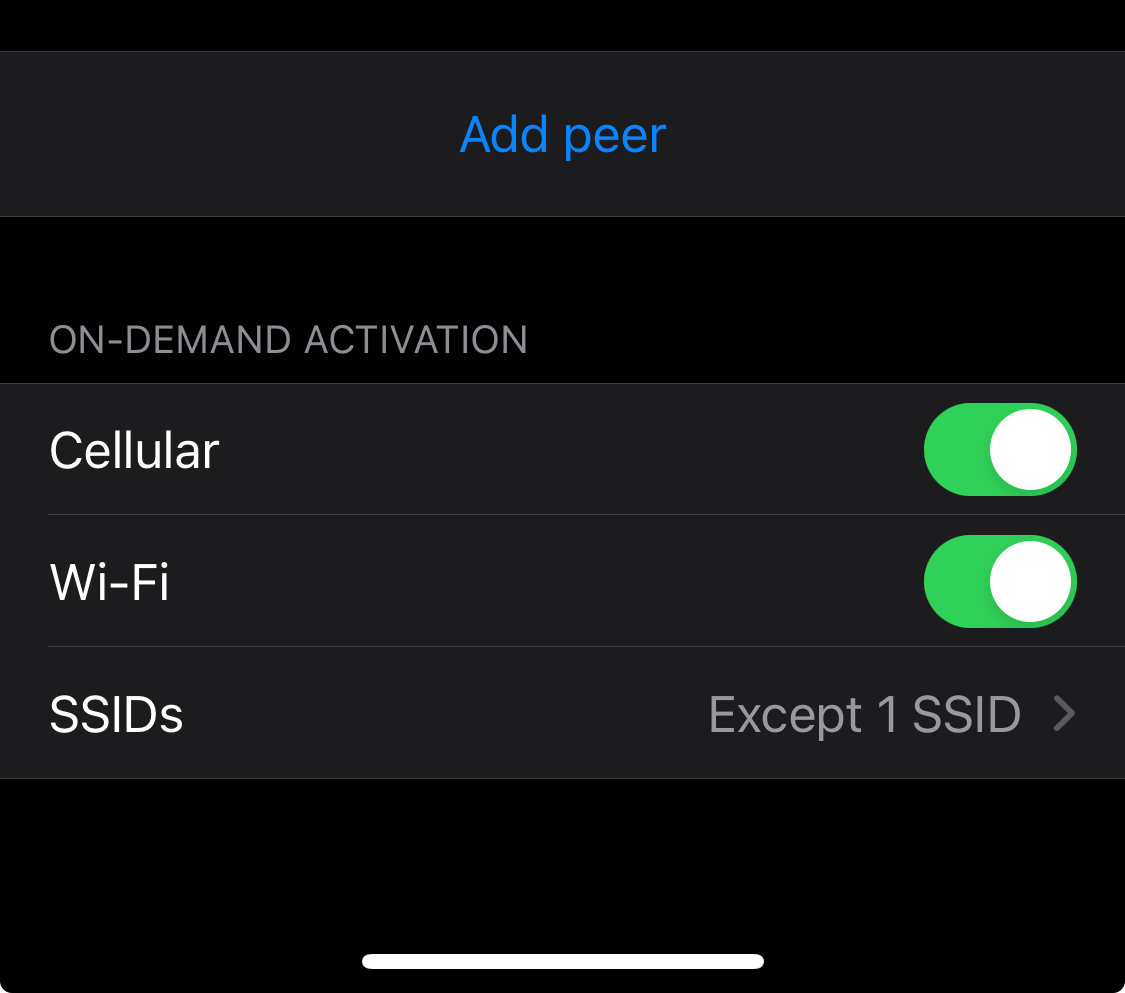

Pijul is a very exciting project. I’ve wanted to try it for months buy haven’t found the time.


Pijul is a very exciting project. I’ve wanted to try it for months buy haven’t found the time.
I’m on iOS and do the same thing.
The WireGuard app has a setting to “connect on demand”. It’s in the individual connections/configurations.

You can then set either included or excluded SSIDs. There’s also an option to always connect when you’re on mobile/cellular data.
I imagine the Android app is similar.


DM’ed you the link.
Reason: personal GitHub account.


Reddit was aggressively rate limiting tools used to delete and edit content in a funny way when the API pricing was announced. The API wouldn’t return an error, the rate limiting was silent, and the tools would report successful deletion or edits even when the edit or deletion wasn’t made.
I had to modify an existing script to handle the 5-second rate limit and, lieu of deleting, I just rewrote each comment with a farewell.
Even then I did 3 passes (minor additional edits) in cases Reddit was saving previous edits.
My content has stayed edited.


Neat, I’ll have to look it up. Thanks for sharing!


Nextcloud isn’t exposed, only a WireGuard connection allows for remote access to Nextcloud on my network.
The whole family has WireGuard on their laptops and phones.
They love it, because using WireGuard also means they get a by-default ad-free/tracker-free browsing experience.
Yes, this means I can’t share files securely with outsiders. It’s not a huge problem.


We really can vote with our dollars. The issue is that we don’t (I’m point right at myself here).
Don’t buy the things, we probably don’t need em.


SMB : https://en.m.wikipedia.org/wiki/Server_Message_Block
In short it’s a way to share network access to storage across MacOS/Linux/Windows.
MacOS switched from AFS to SMB (as the default file sharing / network storage protocol) a few years ago as it was clear that was how everything was headed - though iOS and MacOS also have native support for NFS.
On linux, you can use samba to create SMB shares that will be available to your iOS device.
It’s a lot of configuration though - so maybe not the best choice.
As for Nextcloud - indeed you can use it in your local network without making it available on your WAN connection. That’s how we use it here.
When we need it remotely - we VPN into our home network. But no exposed ports. :)


Neat solution!


I use Nextcloud. But that also means setting up and managing Nextcloud. By the same token you could use google drive.
For notes and photos you can export them within the app. Notes specifically requires that you print and then hit the share on the print dialogue to save the notes to the file system as a pdf.
Notes also has another option: if you have a non-Apple mail account on your phone - you can enable notes for that email account and simply move (or copy) your notes from one account to the other. The notes will then become available within that email account mailbox structure on any device or machine where that email account is enabled.
For voice recordings you can save any voice recording directly to the iOS filesystem.
The iOS files app also allows you to connect to any other server/desktop via SMB.
There are lots of options here. None are awesome, but they work.


deleted by creator


In many cases a lot of sites don’t make it clear that they have a conflict of interest.
You want to push a product on me and you’ll get a cut? Cool, but disclose that.


Update: I went and had a look and there’s a Terraform provider for OPNSense under active development - it covers firewall rules, some unbound configuration options and Wireguard, which is definitely more than enough to get started.
I also found a guide on how to replicate pfBlocker’s functionality on OPNSense that isn’t terribly complicated.
So much of my original comment below is less-than-accurate.
OPNSense is for some, like me, not a viable alternative. pfBlockerNG in particular is the killer feature for me that has no equivalent on OPNSense. If it did I’d switch in a heartbeat.
If I have to go without pfBlockerNG, then I’d likely turn to something that had more “configuration as code” options like VyOS.
Still, it’s nice to know that a fork of a fork of m0n0wall can keep the lights on, and do right by users.


If you backup your config now, you’d be able to apply the config to CE 2.7.x.
While this would limit you to an x86 type device, you wouldn’t be out of options.
I am an owner of an SG-3100 as well (we don’t use it anymore), but that device was what soured me on Netgate after using pfSense on a DIY router at our office for years…
I continued to use pfSense because of the sunk costs involved (time, experience, knowledge). This is likely the turning point.
While you’re technically right, I don’t see a material difference between paying with cash and paying with data (Verge sign up is free, but it’s still sign up).


Cluster of Pi4 8GBs. Bought pre-pandemic; love the little things.
Nomad, Consul, Gluster, w/ TrueNas-backed NFS for the big files.
They do all sorts of nifty things for us including Nightscout, LanguageTool OSS, monitoring for ubiquiti, Nextdrive, Grafana (which I use for home monitoring - temps/humidity with alerts), Prometheus & Mimir, Postgres, Codeserver.
Basically I use them to schedule dockerized services I want to run or am interested in playing with/learning.
Also I use Rapsberry Pi zero 2 w’s with Shairport-sync (https://github.com/mikebrady/shairport-sync ) as Airplay 2 streaming bridges for audio equipment that isn’t networked or doesn’t support AirPlay 2.
I’m not sure I’d buy a Pi4 today; but they’ve been great so far.


Discomfort can be a good thing; change is often uncomfortable.
But that’s a far cry from being tortured and it sounds like that’s what Musk does to the people around him; using platitudes and words of wisdom as weapons of control and coercion.


I don’t think it will be that cut and dry.
A huge number of tech companies are still and/or will always be fully remote.
Over time, the big pay checks that Meta and Google and Apple are offering will be overshadowed by the possibilities of remote work done right (as opposed to simply working as you are in the office but from home).
There are lots of smart, talented folks out there willing to take a pay cut to gain back the time that office culture can waste, commuting first of all.
Sure there are challenges to the sense of togetherness that can help build great teams, but plenty of remote-only organizations make the time and space to foster that appropriately.
Ultimately, I think we’ll find that the eventual competitors to the MAANG-like behemoths emerge out of smart, well designed, remote-first organizations. Though I think Netflix is largely remote - at least for the engineers I know who work there.


Grateful that they don’t. But they have tried to do it with podcasts.
Spotify “pulled an Apple”, bought Gimlet and moved all their podcasts onto Spotify exclusively. I don’t use Spotify and chose to find alternatives. I’m happy I did.
Pros:
Cons: